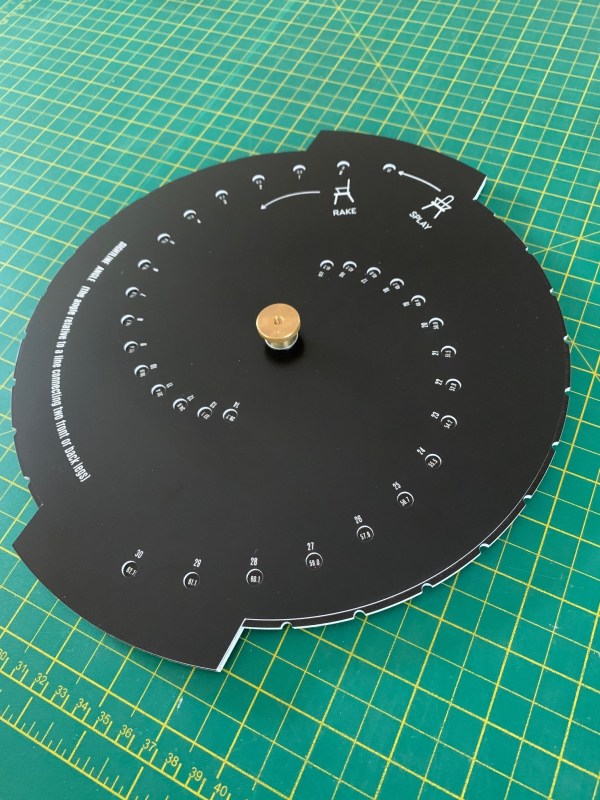
I’m a furniture maker first and a writer second, or maybe third (after, perhaps, being a master of tangential side projects). So, when I approached writing “James Krenov: Leave Fingerprints,” my biography of the cabinetmaker who was the founder of the woodworking school I attended, it seemed appropriate to take part in retracing some of his steps as a craftsperson.
In Krenov’s body of work, there is one piece that always stood out to me for its graceful presence and idiosyncratic form: 1977’s “A Playful Thing,” detailed extensively in Krenov’s third book on cabinetmaking, “The Impractical Cabinetmaker.” The piece is a pivotal demarcation in Krenov’s output – both a reprisal of his 1962 “No-Glass Showcase of Lemon Wood” from the earliest stage of his career and a harbinger of his future output of leggy cabinets on stands. I also had the pleasure of seeing the piece in person; Krenov kept it and it is still in the family. Seeing it in person confirmed its appeal to me.

So, in February of 2019, I started my own version of the piece. I was happy to have both Krenov’s original drawings for the piece (published in “The Impractical Cabinetmaker”) as well as the insight I’d gained from examining much of his work. I had a pretty good footing to start on. But the understated form of this cabinet hides the complexity of its execution. Between the veneer work, the drawers that pass through both ends of the carcase, the carefully carved and chamfered legs and rails, and the drive to make every inch just right, even from unlikely views below or above, it is a real skill test. By the time I started this piece, I was five years out of the College of the Redwoods (now The Krenov School), and while I like to think my skills are always improving, the truth is that this kind of work requires constant practice and refinement of execution to be done properly and gracefully. I had some uphill battles.




Krenov’s original was made with East Indian rosewood and Andaman padauk, woods I wasn’t going to hold my breath looking for these days, but after trips up to Keim Lumber in Millersburg, Ohio, and C.R. Muterspaw in Xenia, Ohio, I came home with some stunning gonçalo alves for the stand/drawer fronts and densely figured soft maple for the veneered surfaces. I rounded those out with aromatic cedar for the drawer bottoms, hard maple for the drawer sides and African blackwood for the pulls, and I’m pleased with my choices.
The result, which I’m happy to still have in our bedroom a year and a half later (and 750 miles from Covington, Ky., where I built it), came out in the way as do many reprisals or reiterations of another maker’s design: different and telling of my process, but in the spirit of Krenov’s original, I think.

Are the proportions exact to Krenov’s original? No. Is the shaping identical? Definitely not. Am I James Krenov? Well, come on, of course not. But in making this piece, and walking a few months in Krenov’s shop slippers, I learned quite a bit. I noticed certain aspects of the piece’s construction that betray Krenov’s history: the dexterous use of a knife in carving the legs and the pulls recall his early life spent carving with a jackknife in Alaska; the aesthetic touch of stepped chamfers and an almost architectural composition echo his teacher, Carl Malmsten, whose roots were firmly planted in the English Arts & Crafts movement.
There is a second stream of influence the piece has exerted over the year and half since I finished building it. With an open and inviting showcase area, what Krenov referred to as a “stage,” it is too hard to resist constantly rotating and replacing small objects to showcase. I find myself picking up the objects in residence and looking them over, something I wouldn’t necessarily do if they were tucked away on a shelf or in a glass cabinet.

And this action, the constant consideration and handling of small, fine objects, might be the most impactful effect this piece had on my consideration of Krenov’s work. Krenov often insisted that his showcase cabinets “complemented” the pieces they displayed, and while the cabinet itself might be artfully done or worthy of examination, it wasn’t doing its job well if it couldn’t elevate or showcase its contents. While I’d read Krenov’s words regarding this, actually living with something that encouraged this interaction made it clear. Throughout his lectures, personal papers and his books, Krenov mentions craftspeople from other mediums, like the potters Bernard Leach or Eva Zeisel, in that light, showcase cabinets like “A Playful Thing” make perfect sense of his role as a cabinetmaker. It may be a “chicken-and-egg” problem – whether his appreciation for small crafts came before his penchant for making showcase cabinets or vice versa, but either way, living with this piece has made it clear how Krenov saw that role.
You can’t write a book by building cabinets. Nor can you build a cabinet just by digging through lumberyards and antique stores. But if you can balance these experiences in just the right way, they might just culminate in work that is more than the sum of its parts. I can’t say I’m sure I got there with my cabinet, but the cabinet helped me consider Krenov’s life and work.










